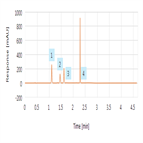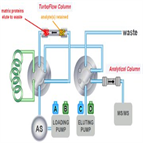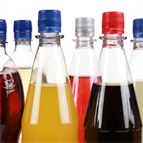Find methods for your needs
Refine by Feature
Displaying 1-5 of 34 results for Tag: Food Safety
Fast separation of coccidiostats
Instrument Type: UHPLCTo demonstrate how the use of alternate UHPLC stationary phase selectivities can facilitate method speed up and as a result this sample throughput was tripled compared to the legacy methods with an associated five-fold reduction in cost per sample for optimized method
Rapid and sensitive UHPLC screening of food dyes in carbonated beverages using UV/Vis wavelength switching
Instrument Type: UHPLCThe analysis of food dyes in carbonated beverages is important as many of these dyes are either controlled substances or are being phased out in certain countries due to their reported adverse health effects. Being able to identify and quantify food dyes in beverages quickly and with high sensitivity is therefore important. Reversed-phase chromatography is an excellent technique for the analysis of dyes. Many dyes are readily soluble in reversed-phase eluents and have strong visible and UV absorbance properties. This method demonstrates the separation of ten contentious dyes.
Advances in Automation of Food-related Analysis and Screening
Instrument Type: LCMSMSWorldwide food safety concerns have risen dramatically as the number of food contamination incidents and product recalls has increased. Every food analysis starts with sample preparation, which is widely accepted as one of the most critical steps of LC/MS. Increased demand for higher throughput, accuracy and lower matrix interference from food analysis laboratories has made sample preparation the largest bottleneck. Turbulent flow chromatography technology can eliminate the need for lengthy offline sample preparation steps, thereby eliminating these disadvantages.
High-Resolution Accurate-Mass (HRAM) Phthalate Screening using Direct Analysis in Real Time (DART) Ambient Ionization
Instrument Type: MSMSPhthalic acid diesters (PAEs), or phthalates, are widely used in industry as a plasticizer in products like toys, flooring, personal care products and food packages. Some PAEs are classified as hazardous, affecting mainly the reproductive system and possibly contributing to cancer. Though regulated, these phthalates might be present and used during production of goods. We demonstrate the possibility of using precursor ion selection and full scan MS2 spectrum, and utilize it as a fingerprint for the characterization of the different compounds/isomers with nominal m/z ratios 279 and 391.
A Rapid and Specific Method for the Detection of Spiked Toxins Into the Food Supply
Instrument Type: LCMSMSDeveloping a fast and accurate screening method for detecting a wide range of toxic compounds is an important task for food safety. HR/AM spectrometry overcomes the screening limitation via selected reaction monitoring (SRM) on triple stage quadrupoles, because specific compounds need not be selected before analysis. Highly confident ID is achieved by accurate mass measurement of both precursor and fragment ions. A novel UHPLC-MS/MS method employing the Q Exactive benchtop Orbitrap mass spectrometer is proposed here for the study of possible spiked toxic agents into apple juice.





